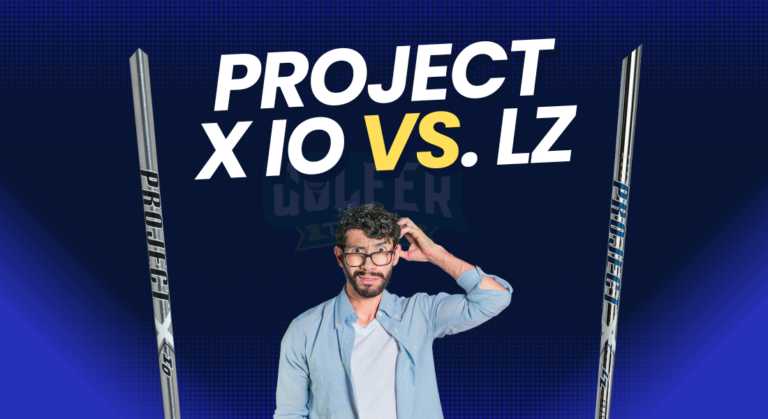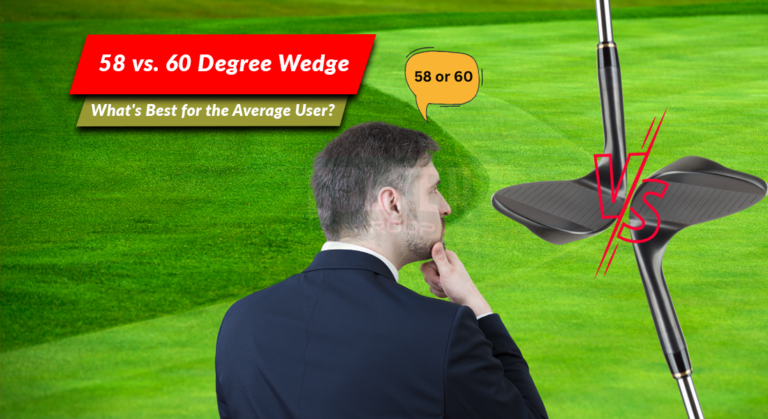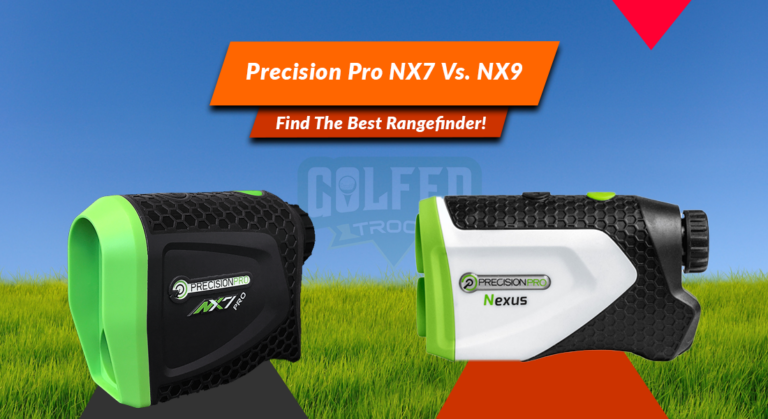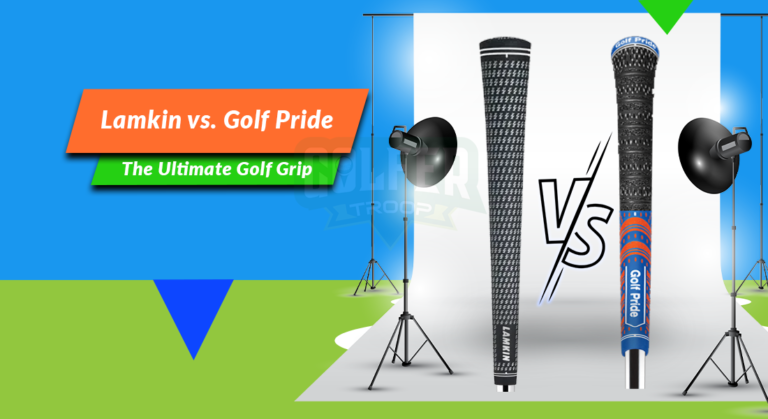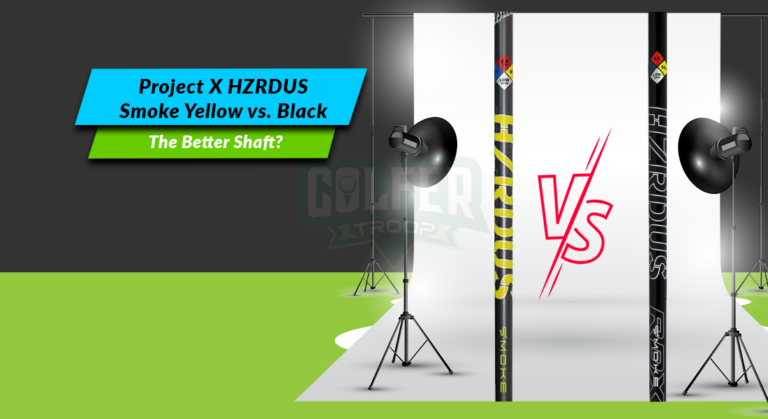M Grind vs. S Grind Wedges: A Comprehensive Discussion
Among different Grind types for wedges, the M-type and S-type grinds are the most popular. These wedges’ components help improve turf contact and enhance ball spin performance. However, not all types of grinds may have the same impact.
So let’s get to the main point, what are the differences between M grind and S grind? The core difference between M Grind and S Grind is that there is more relief on the heel and the bounce options for the latter. For M grind, relief is focused on the Heel and toe, but the bounce is lower.
There’s more to the differences between them, which you will know after reading this article. Therefore, without wasting much time, let us dive into the write-up.
Overview of M Grind wedges
The right wedge grind is always crucial to select. It enables you to experiment, be comfortable with your swing type, and hit different shots.
In the case of M Grind, you’ll be offered heel, toe and edge relief. It comes with medium-bounce and is highly suitable for shallow angles, even in sandy conditions.
It generally comes with a bounce option at 8 degrees. This grind is usually made for versatile conditions, ranging from medium to firm.
As a player, if someone has a wide swing, this grind-type would be an ideal option. Players within mid to low handicap level would find this grind very handful.
Most importantly, a player needs at least decent-level skills to get the best out of this grind type.
Overview of S Grind wedges
When it comes to the S-Grind type, it offers you indifferent options for the bounce. It mostly focuses on players who like to play the shots with a square face.
This grind has a full-face sole with a trailing edge grind that is narrowed down considerably.
It eventually enables the ball to have a faster feel on the turf. As a grind, the grind suits the best situations ranging from neutral to firm.
It is for all those players who like to have control of the loft, either from behind or ahead of the hands.
In addition, the grind offers a medium bounce at almost 10 degrees. Moreover, the grind works perfectly for the square and full-faced shots.
M Grind Vs S Grind: Comparison Chart
Different grind types in the wedges come with distinctive features and also similarities. That goes the same for M grind and S grind. To get a better view, go through the following chart:
| Factors | M Grind | S Grind |
| Sole | Heel and toe | Heel |
| Bounce Type | Medium | Medium |
| Bounce Degree | 10 | 8 |
| Attack Suitability | Steeper Angle | Shallower Angle |
| Best for | Medium to firm | Neutral to firm conditions |
What are the differences between M Grind and S Grind?
Different grind types differ in traits and functional aspects. The outcome you get from them shapes the things you require from them. That said, some of the things that truly set them apart are discussed below:
Sole Type
To differentiate between M Grind and S Grind, the first thing you should notice is their Sole type. You’ll find shallower heels for the S-type grind, particularly in the sole.
On the other hand, it is a shallower heel and toe for the M grind. Here the outcome is different depending on where the sole gets grinded.
Having the sole grinded on the heel will enable you to play attacking with a shallower angle. It prompts the club to swing freely and provides it ample room.
If you prefer to use the M grind, you need to be someone who attacks with steeper angles.
The reason is that both the toe and heel are grinded in this regard. Therefore, the room for the players with M grind is greater due to the sole type.
Bounce Options
Despite the bounce type being similar to the kind of grinds, the bounce options vary among them. Both these grind types have different bounce degrees.
The S grind has 10 degrees of bounce, whereas for the M grind, the bounce degree is 8.
In this context, the thing you should take into consideration is forgiveness. A club having more bounce degrees means that it is more forgiving. Especially for beginners, this thing matters a lot.
That’s why, if you are a beginner, you should go with the S grind due to the more forgiving attitude than the M grind.
Conditions
Both the M and S grinds can be used in different conditions. But you can get the best out of them under certain conditions.
If both these grinds are used on neutral turf, they will give the desired output. But if other factors of the wedges are in play, the results will be slightly different in that scenario.
FAQs.
Grind types may invoke various confusions. That is why some queries are lined up that might clarify your doubts. Let’s look at those:
Is M grind good for sand?
The M grind has the characteristics of a medium bounce wedge, offering relief on the heel, toe, and trails. It has the versatile capability that allows the grind to work in sandy conditions.
Is the S grind good for full shots?
The S grind allows complete control of the shots and their loft. In this regard, the type of shots okay with this grind is full-face and square-faced shots.
What does bounce M grind offer?
The M grind comes with a medium-level bounce and a crescent-shaped sole. Overall, such traits provide relief to the heel-toe and the trailing edge.
Conclusion
The grind types on the wedges are crucial for the shots played and the impact on the loft. It also matters how well the gameplay can adapt to the conditions.
That said, different types of wedges are suitable for players with varying skillset. The M grind isn’t that good for novices, whereas the S grind will enable them to play freely. In addition, the type also decides the kind that is much more effective and suitable for a particular grind type.
Moreover, after reading this article, we hope you can draw the line between M and S grind. In case any confusion arises, feel free to communicate.
- Read Also: Callaway MD5 vs. MD4: Which Wedge Will Help You Win It?
- Read Also: Cleveland CBX 2 vs RTX ZipCore: Which Wedge Fits Your Needs
- Read Also: Cleveland RTX 4 vs. Zipcore | Which Golf Wedge Should You Choose?
- Read Also: S Grind vs. W Grind | Understanding the Different Wedge Sole Designs in Golf
- Read Also: Titleist SM7 vs. SM8: Find the Perfect Wedge for You
Meet Jalal, a passionate golf writer and the driving force behind Golfertroop.com, your go-to destination for all things golfing! Whether you’re a seasoned golfing veteran or a beginner taking your first swing, Jalal is here to assist you in making the most out of your golfing experience.

